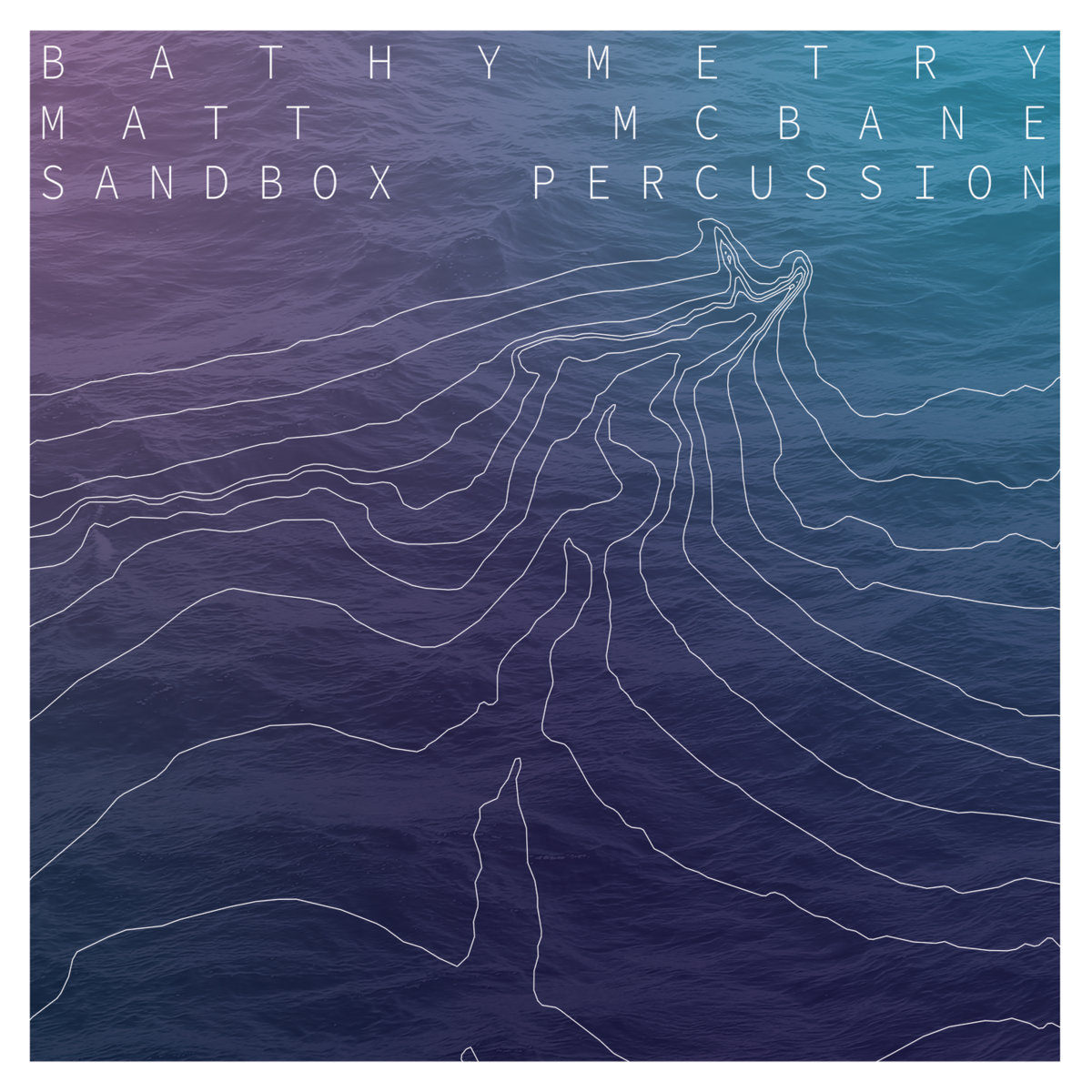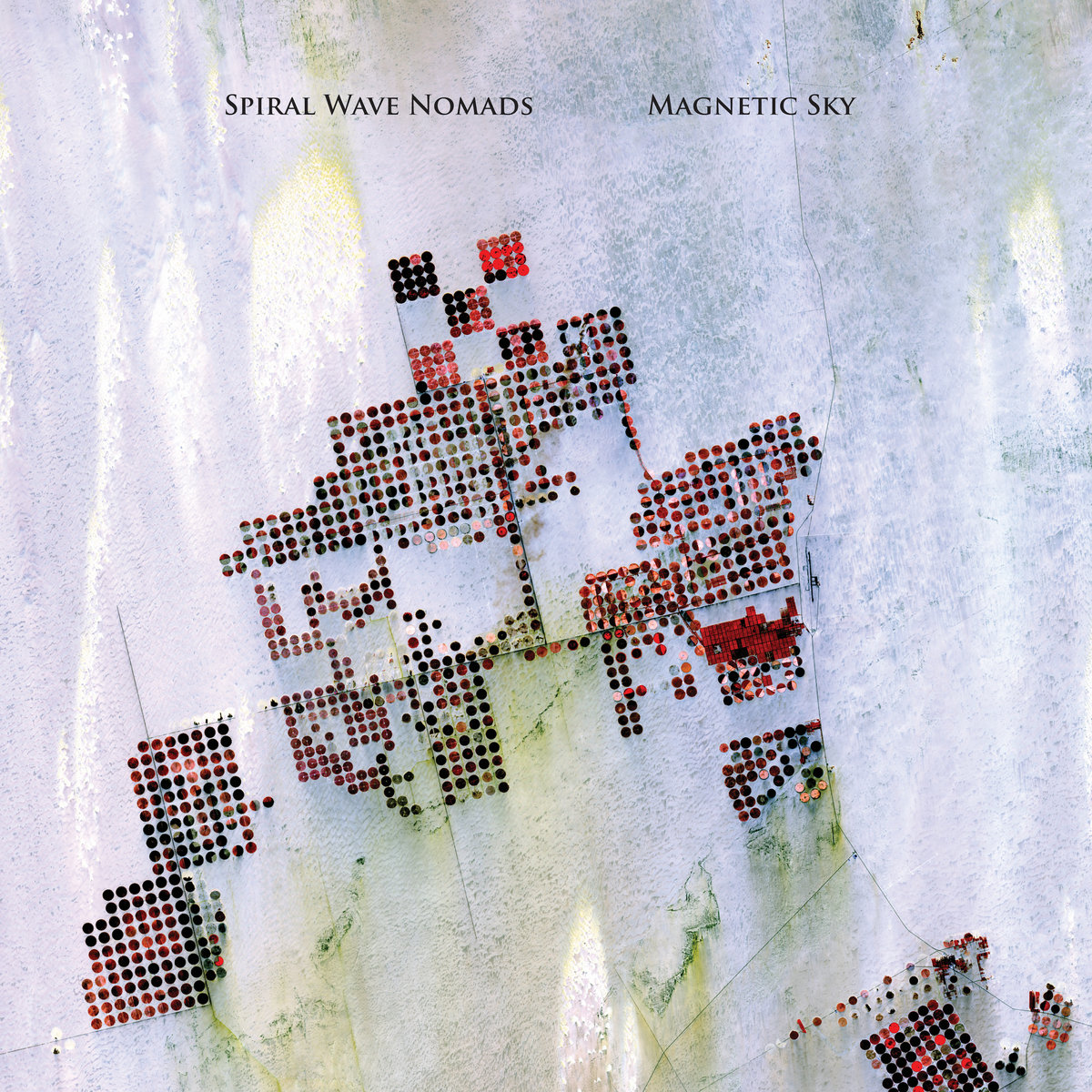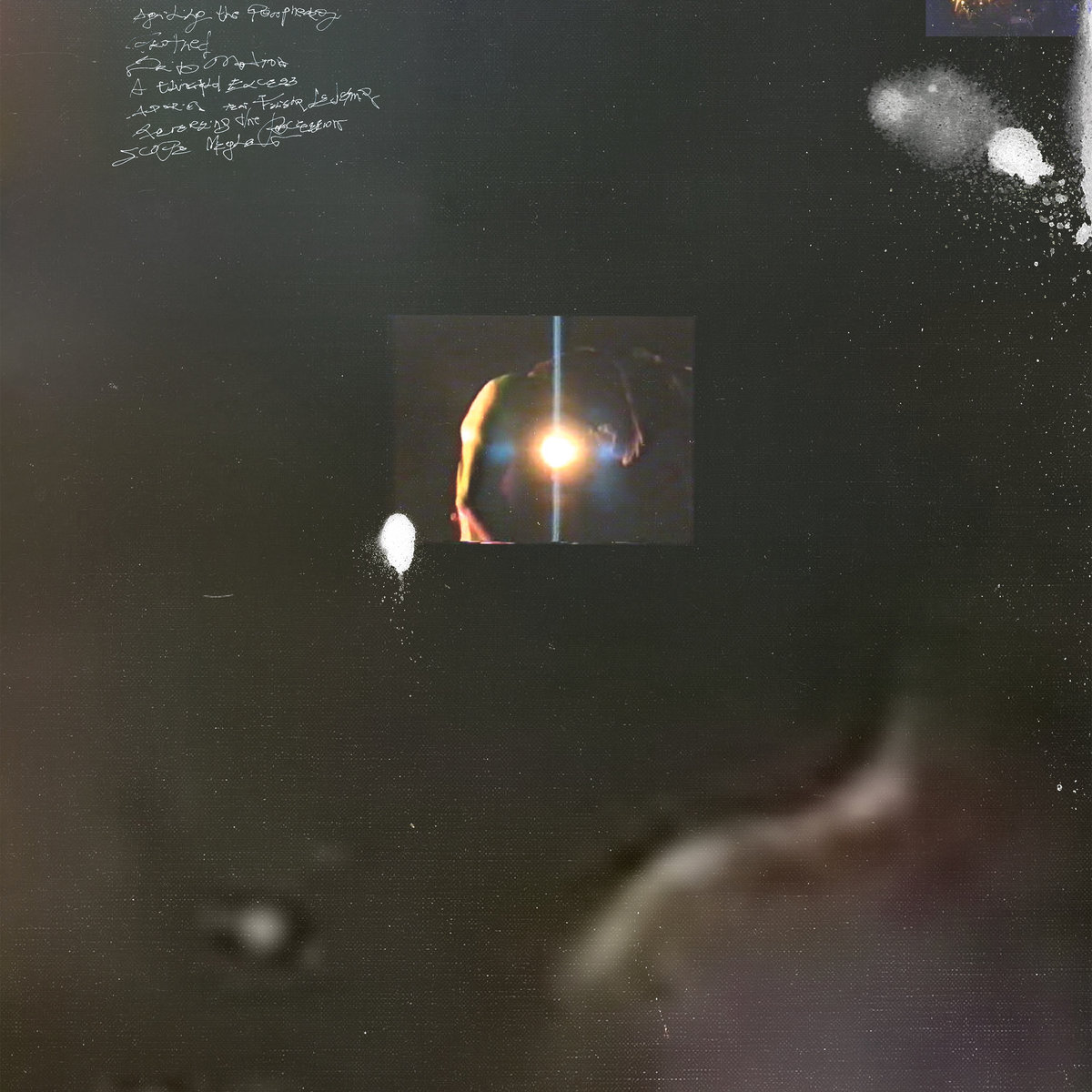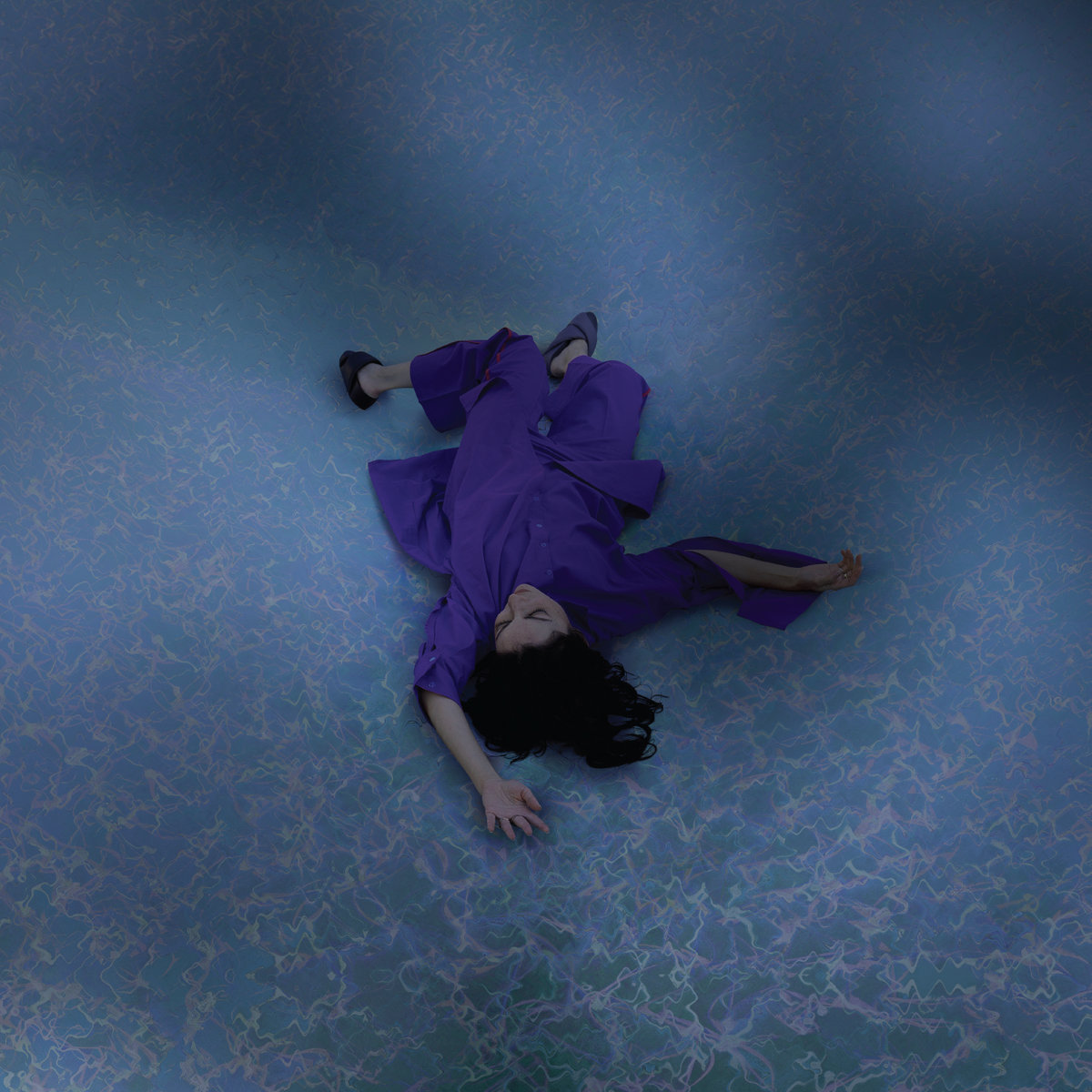 This latest album from Carla dal Forno is her first since relocating to a small town (Castlemaine) in her native Australia and that dramatic change in environment has understandably made quite an impact on her overall vibe (as the album description puts it, she "returns self-assured and firmly settled within the dense eucalypt bushlands"). Fortunately, it seems like the transformation was an entirely favorable one, as literally everything that made dal Forno's previous work so wonderful and distinctive (ghostly pop hooks, stark bass-driven post-punk grooves, tight songcraft) remains intact. Now, however, her bloodless pop songs are charmingly enhanced with an understated tropical feel as well. For the most part, Come Around is still light years away from anything like a conventional beach party, but songs like the title piece at least come close to approximating a hypnagogic one. Aside from that, dal Forno also displays some impressive creative evolution on the production side, as these nine songs are a feast of subtle dubwise and psych-inspired touches in the periphery. That said, the primary appeal of Come Around is still the same as ever, as dal Forno remains nearly unerring in churning out songs so strong that they truly do not need anything more than her voice, a cool bass line, and a simple drum machine groove to leave a deep impression.
This latest album from Carla dal Forno is her first since relocating to a small town (Castlemaine) in her native Australia and that dramatic change in environment has understandably made quite an impact on her overall vibe (as the album description puts it, she "returns self-assured and firmly settled within the dense eucalypt bushlands"). Fortunately, it seems like the transformation was an entirely favorable one, as literally everything that made dal Forno's previous work so wonderful and distinctive (ghostly pop hooks, stark bass-driven post-punk grooves, tight songcraft) remains intact. Now, however, her bloodless pop songs are charmingly enhanced with an understated tropical feel as well. For the most part, Come Around is still light years away from anything like a conventional beach party, but songs like the title piece at least come close to approximating a hypnagogic one. Aside from that, dal Forno also displays some impressive creative evolution on the production side, as these nine songs are a feast of subtle dubwise and psych-inspired touches in the periphery. That said, the primary appeal of Come Around is still the same as ever, as dal Forno remains nearly unerring in churning out songs so strong that they truly do not need anything more than her voice, a cool bass line, and a simple drum machine groove to leave a deep impression.
The opening "Side By Side" is a damn-near perfect illustration of dal Forno's distinctive strain of indie pop magic, as crashing waves give way to a rubbery, laid-back bass line and a bittersweet, floating vocal melody. Lyrically, dal Forno still seems to be in the throes of heartache, but also comes across as very clear-eyed, confident, and sensuous. That turns out to be quite an effective combination, as these nine songs radiate deadpan cool and wry playfulness while still maintaining palpable human warmth and soulfulness at their core. That alone would be more than enough to carry this album (along with all the great hooks and bouncy slow-motion bass grooves), but dal Forno is also unusually inventive with beats, psychotropic production touches, and the assimilation of unexpected influences this time around. The album's stellar title piece is a prime example of the latter, as it feels like dal Forno seamlessly mashed together The Shangri-Las and Young Marble Giants to soundtrack a surf movie for ghosts.


 As a teenage surfer Matt McBane became obsessed with the sea and the way in which the bathymetry of the ocean floor affects the way that waves break. His composition Bathymetry mirrors that relationship, with his bass synthesizer providing the platform to shape the more trebly waves of varied percussion played by Sandbox Percussion (a well-named and playful ensemble). On the surface, this album is slightly out of my, rather idiosyncratic, comfort zone. The accompanying videos were off-putting and (politeness dictates that I cannot write what I would cheerfully do with them) ping-pong balls overused. Despite this, my listening curiosity was piqued and held steady. Then halfway through the 40 minute duration, the track "Groundswell" completely won me over, and I rode a wave of enjoyment all the way to the end. Later on, afer repeated listens, it occurred to me that the same process happens on each track, as bursts of percussive grit, pops and scrapes away, to eventually leave the rewarding pearl.
As a teenage surfer Matt McBane became obsessed with the sea and the way in which the bathymetry of the ocean floor affects the way that waves break. His composition Bathymetry mirrors that relationship, with his bass synthesizer providing the platform to shape the more trebly waves of varied percussion played by Sandbox Percussion (a well-named and playful ensemble). On the surface, this album is slightly out of my, rather idiosyncratic, comfort zone. The accompanying videos were off-putting and (politeness dictates that I cannot write what I would cheerfully do with them) ping-pong balls overused. Despite this, my listening curiosity was piqued and held steady. Then halfway through the 40 minute duration, the track "Groundswell" completely won me over, and I rode a wave of enjoyment all the way to the end. Later on, afer repeated listens, it occurred to me that the same process happens on each track, as bursts of percussive grit, pops and scrapes away, to eventually leave the rewarding pearl. Prolific artists on their own, the duo of Eric Hardiman (guitar/bass/electronics) and Michael Kiefer (drums/keyboards) have still managed to put out their third album in four years as Spiral Wave Nomads. The spacey, psychedelic tinged guitar/bass/drum excursions are of course expected by now, but the inclusion of additional electronic instrumentation makes Magnetic Sky even greater.
Prolific artists on their own, the duo of Eric Hardiman (guitar/bass/electronics) and Michael Kiefer (drums/keyboards) have still managed to put out their third album in four years as Spiral Wave Nomads. The spacey, psychedelic tinged guitar/bass/drum excursions are of course expected by now, but the inclusion of additional electronic instrumentation makes Magnetic Sky even greater. This is the first full-length collaboration between Sabra and Tabbal, but it is apparently also the sixth collaborative release between Portland's Beacon Sound and Lebanon's Ruptured Records (which was co-founded by Tabbal). While Tabbal's solo work has been a very enjoyable recent discovery for me, this is my first encounter with Julia Sabra, who is normally one-third of the excellent Beirut-based dreampop trio Postcards. The pair do have a history of working together, as Tabbal has co-produced several Postcards releases, but their creative union only began to take shape in the aftermath of Beirut's massive 2020 port explosion (which destroyed Sabra's home, badly injured her partner/bandmate Pascal Semerdjian, and displaced a whopping 300,000 people). Unsurprisingly, one of the primary themes of Snakeskin is the precarious concept of "home" and the "the disappearance of life as we know it" in a volatile and oft-violent world. Those are admittedly more urgent themes in Tabbal and Sabra's neck of the woods than some others (the album was also inspired by the 2021 Palestinian and the invasion of Armenia), but loss and uncertainty eventually come for us all and they make a universally poignant emotional core for an album. And, of course, great art can sometimes emerge from deeply felt tragedies and Tabbal and Sabra are a match made in heaven for that challenge, as Julia's sensuous, floating vocals are the perfect complement to Tabbal's gnarled and heaving soundscapes.
This is the first full-length collaboration between Sabra and Tabbal, but it is apparently also the sixth collaborative release between Portland's Beacon Sound and Lebanon's Ruptured Records (which was co-founded by Tabbal). While Tabbal's solo work has been a very enjoyable recent discovery for me, this is my first encounter with Julia Sabra, who is normally one-third of the excellent Beirut-based dreampop trio Postcards. The pair do have a history of working together, as Tabbal has co-produced several Postcards releases, but their creative union only began to take shape in the aftermath of Beirut's massive 2020 port explosion (which destroyed Sabra's home, badly injured her partner/bandmate Pascal Semerdjian, and displaced a whopping 300,000 people). Unsurprisingly, one of the primary themes of Snakeskin is the precarious concept of "home" and the "the disappearance of life as we know it" in a volatile and oft-violent world. Those are admittedly more urgent themes in Tabbal and Sabra's neck of the woods than some others (the album was also inspired by the 2021 Palestinian and the invasion of Armenia), but loss and uncertainty eventually come for us all and they make a universally poignant emotional core for an album. And, of course, great art can sometimes emerge from deeply felt tragedies and Tabbal and Sabra are a match made in heaven for that challenge, as Julia's sensuous, floating vocals are the perfect complement to Tabbal's gnarled and heaving soundscapes. I was a bit later to the Angelo Harmsworth party than I would have liked, but the Berlin-based American composer has been fitfully releasing very distinctive blown-out "ambient" albums for about a decade now on an array of hip and discriminating small labels (Opal Tapes, Vaagner, enmossed, Psychic Liberation, etc.). Harmsworth's latest is his first for Students of Decay and marks a rare vinyl outing, as most of his previous physical releases have been limited to cassette. According to the label, Singe "may be the high water mark" of Harmsworth's career to date, which does feel like a completely plausible claim, but one that is very hard to confidently echo given how many killer Harmsworth pieces already exist. Even if Singe fails to conclusively eclipse all of Harmsworth's past triumphs, however, it does seem to be one of his most consistently strong releases and an ideal starting point for the curious. Notably, describing Harmsworth's vision as "ambient" or even "power ambient" feels cruelly reductionist, which is probably why he amusingly titled a 2020 release Fully Automated Luxury Ambient. That imaginary subgenre feels much closer to the mark, as the intensity and textural inventiveness that Angelo brings to these compositions shares far more common ground with artists like Tim Hecker or Fennesz (or collapsing power lines during a live volcano) than it does with anyone trafficking in droning, meditative loops.
I was a bit later to the Angelo Harmsworth party than I would have liked, but the Berlin-based American composer has been fitfully releasing very distinctive blown-out "ambient" albums for about a decade now on an array of hip and discriminating small labels (Opal Tapes, Vaagner, enmossed, Psychic Liberation, etc.). Harmsworth's latest is his first for Students of Decay and marks a rare vinyl outing, as most of his previous physical releases have been limited to cassette. According to the label, Singe "may be the high water mark" of Harmsworth's career to date, which does feel like a completely plausible claim, but one that is very hard to confidently echo given how many killer Harmsworth pieces already exist. Even if Singe fails to conclusively eclipse all of Harmsworth's past triumphs, however, it does seem to be one of his most consistently strong releases and an ideal starting point for the curious. Notably, describing Harmsworth's vision as "ambient" or even "power ambient" feels cruelly reductionist, which is probably why he amusingly titled a 2020 release Fully Automated Luxury Ambient. That imaginary subgenre feels much closer to the mark, as the intensity and textural inventiveness that Angelo brings to these compositions shares far more common ground with artists like Tim Hecker or Fennesz (or collapsing power lines during a live volcano) than it does with anyone trafficking in droning, meditative loops. Dave Clarkson is a gem who has flown under my—far from infallible—radar for about 30 years. There are upwards of 40 releases emanating in his impressive catalog, from the Cavendish House studio, including many of these Guides which have focused on everything from beaches, caves, forests, and lighthouses, with tangents to rain, ghost stories and illness. That another of his albums, For Horselover Fat by Eye In The Sky has a bash at honoring the concerns and creativity of the astonishing Philip K. Dick is right up my alley.
Dave Clarkson is a gem who has flown under my—far from infallible—radar for about 30 years. There are upwards of 40 releases emanating in his impressive catalog, from the Cavendish House studio, including many of these Guides which have focused on everything from beaches, caves, forests, and lighthouses, with tangents to rain, ghost stories and illness. That another of his albums, For Horselover Fat by Eye In The Sky has a bash at honoring the concerns and creativity of the astonishing Philip K. Dick is right up my alley. As John Jagos sings "
As John Jagos sings " I was caught completely off guard by this latest opus from Dalt, as much of it sounds more like a three-way collaboration between Astrud Gilberto, Perez Prado, and Walter Wanderley than anything resembling the warped and stark electronic pop mutations that the Colombian composer has become synonymous with. After my initial disbelief subsided, however, I quickly decided that ¡Ay! may very well be the strongest album of Dalt's career to date. I suspect Dalt herself would probably agree, as it would be fair to say that her vision remains as compelling and innovative as ever, but she has merely kicked her self-imposed artistic restraints to the curb and embraced the warmer, more sensuous, and melodic sounds that she grew up around. Or, as the album description colorfully puts it, "through the spiraling tendencies of time and topography, Lucrecia has arrived where she began." In any case, the end result is a wonderfully sultry and evocative collection of seductive vocals and tropical rhythms beautifully enhanced with a host of psychotropic and industrial-damaged touches. And she somehow makes it sound like the most natural thing in the world. I definitely did not expect Dalt to secretly be a tropical pop genius at all, which makes her previous albums all the more fascinating now that I know that they were made while pointedly suppressing some of her greatest strengths.
I was caught completely off guard by this latest opus from Dalt, as much of it sounds more like a three-way collaboration between Astrud Gilberto, Perez Prado, and Walter Wanderley than anything resembling the warped and stark electronic pop mutations that the Colombian composer has become synonymous with. After my initial disbelief subsided, however, I quickly decided that ¡Ay! may very well be the strongest album of Dalt's career to date. I suspect Dalt herself would probably agree, as it would be fair to say that her vision remains as compelling and innovative as ever, but she has merely kicked her self-imposed artistic restraints to the curb and embraced the warmer, more sensuous, and melodic sounds that she grew up around. Or, as the album description colorfully puts it, "through the spiraling tendencies of time and topography, Lucrecia has arrived where she began." In any case, the end result is a wonderfully sultry and evocative collection of seductive vocals and tropical rhythms beautifully enhanced with a host of psychotropic and industrial-damaged touches. And she somehow makes it sound like the most natural thing in the world. I definitely did not expect Dalt to secretly be a tropical pop genius at all, which makes her previous albums all the more fascinating now that I know that they were made while pointedly suppressing some of her greatest strengths. This is Mikko Singh's best and most consistent record yet as Haleiwa. Both his first full length releases Pura Vida dude and Palm Trees Of The Subarctic were light and dreamy, while his third Cloud Formations accelerated Haleiwa onto another level, driven by good tunes and several great moments, not least the plunge through synthesizers into warm bass driven melody on the opener "HKI-97," and the digital blips of "Foggy" which (perhaps unconsciously) resembles Brian Wilson frantically transposing part of "California Girls" into morse code. That third record heralded a deeper sound, perhaps because Singh switched to analog cassette and reel-to-reel tape recording, and it also included more variety although for no clear reason. Hallway Waverider avoids that pitfall by finding a sweet spot and then showing little or no desire to move very far away.
This is Mikko Singh's best and most consistent record yet as Haleiwa. Both his first full length releases Pura Vida dude and Palm Trees Of The Subarctic were light and dreamy, while his third Cloud Formations accelerated Haleiwa onto another level, driven by good tunes and several great moments, not least the plunge through synthesizers into warm bass driven melody on the opener "HKI-97," and the digital blips of "Foggy" which (perhaps unconsciously) resembles Brian Wilson frantically transposing part of "California Girls" into morse code. That third record heralded a deeper sound, perhaps because Singh switched to analog cassette and reel-to-reel tape recording, and it also included more variety although for no clear reason. Hallway Waverider avoids that pitfall by finding a sweet spot and then showing little or no desire to move very far away. This may be Swiss pianist/composer Raphael Loher's first solo album, but he has crossed my path before with his Baumschule trio (featuring Julian Sartorius and Manuel Troller). I am much less familiar with Loher's other trio (KALI), but the importance is that he has spent time improvising with inspiring musicians and has accumulated some very intriguing compositional ideas along the way. Interestingly, Keemuun is itself a bit of an improvisatory collaboration with inspiring (if unwitting) musicians, as Loher often played along with albums by other artists while experimenting with his rapid-fire piano patterns (Beatrice Dillon's rhythmically adventurous Workaround was a particularly central touchstone). In fact, just about everything about this album's evolution feels like fertile grist for a "galaxy brain" meme: a prepared piano album…limited to only ten notes spanning two octaves…improvised against cutting edge techno rhythms…but with all of those foundational rhythms totally excised from the final recording. Needless to say, all of those factors make for a very cool album concept in theory, but I am pleased to report that Loher's brilliant execution has made this a killer album in reality as well.
This may be Swiss pianist/composer Raphael Loher's first solo album, but he has crossed my path before with his Baumschule trio (featuring Julian Sartorius and Manuel Troller). I am much less familiar with Loher's other trio (KALI), but the importance is that he has spent time improvising with inspiring musicians and has accumulated some very intriguing compositional ideas along the way. Interestingly, Keemuun is itself a bit of an improvisatory collaboration with inspiring (if unwitting) musicians, as Loher often played along with albums by other artists while experimenting with his rapid-fire piano patterns (Beatrice Dillon's rhythmically adventurous Workaround was a particularly central touchstone). In fact, just about everything about this album's evolution feels like fertile grist for a "galaxy brain" meme: a prepared piano album…limited to only ten notes spanning two octaves…improvised against cutting edge techno rhythms…but with all of those foundational rhythms totally excised from the final recording. Needless to say, all of those factors make for a very cool album concept in theory, but I am pleased to report that Loher's brilliant execution has made this a killer album in reality as well.
